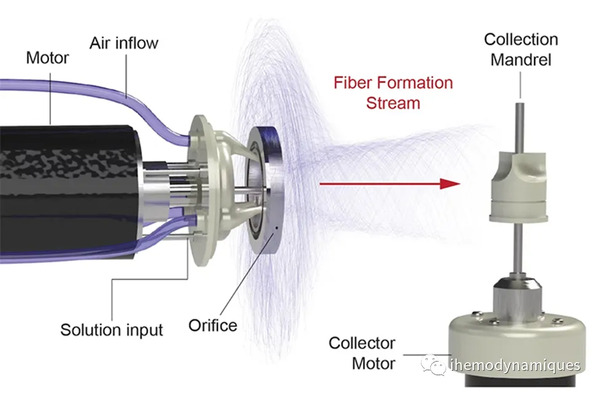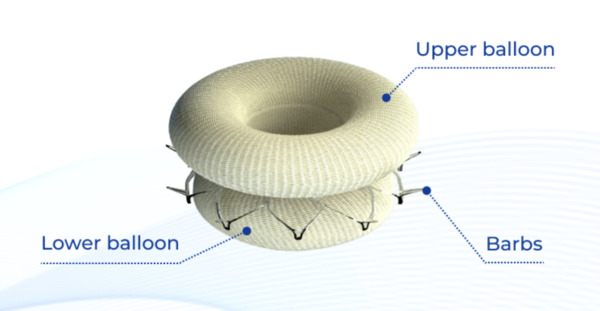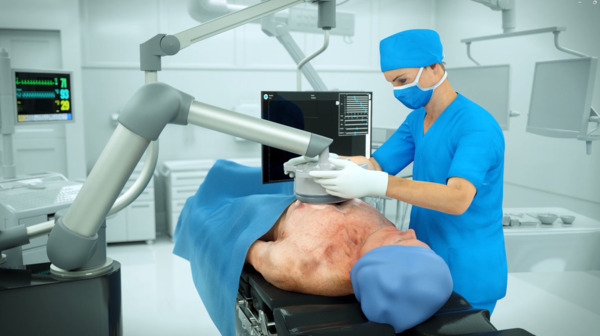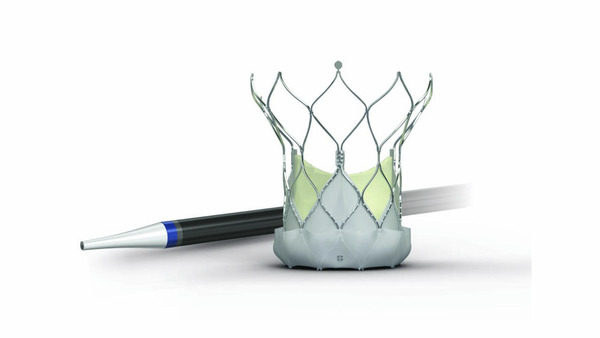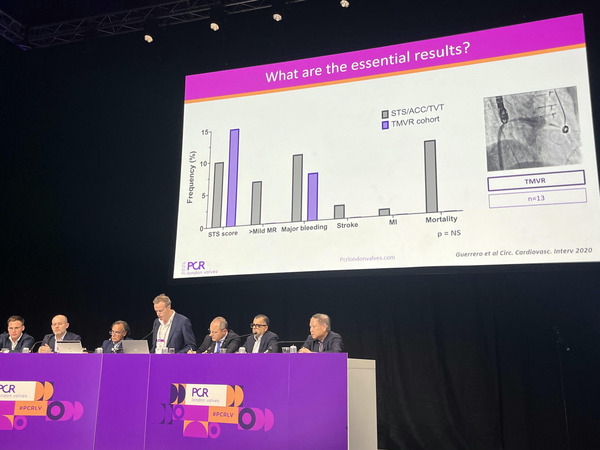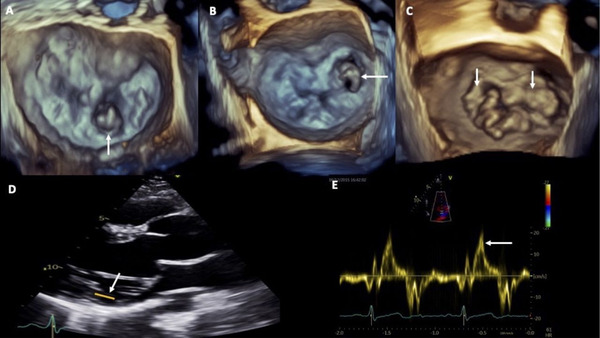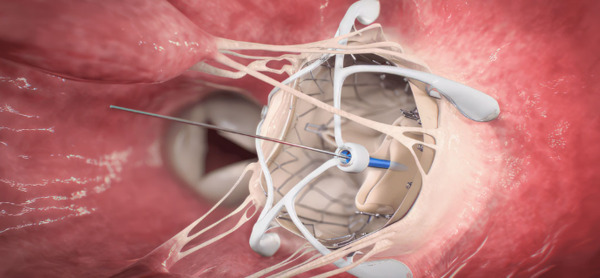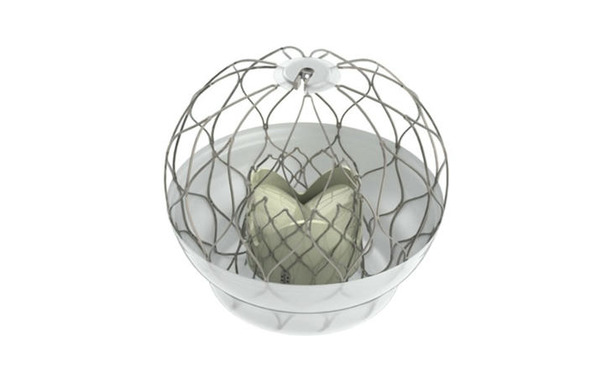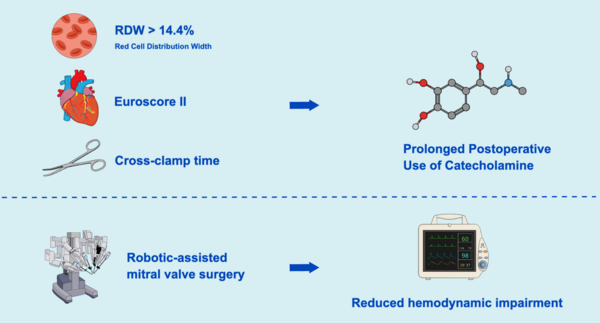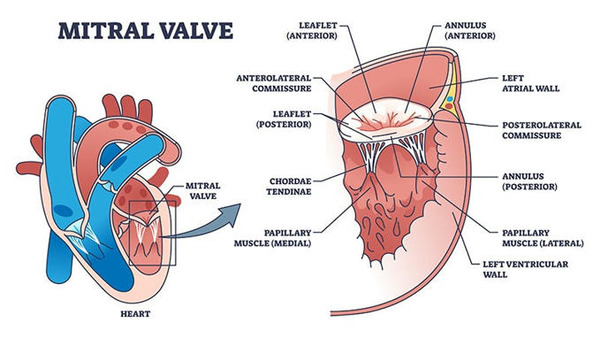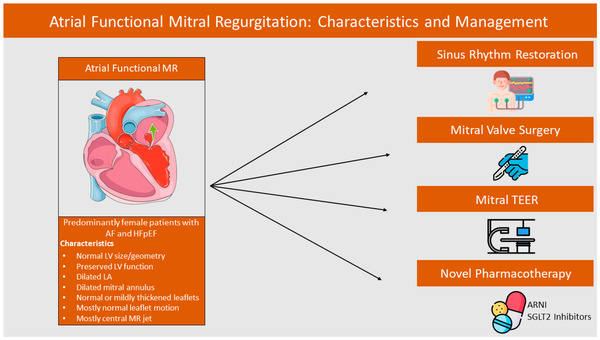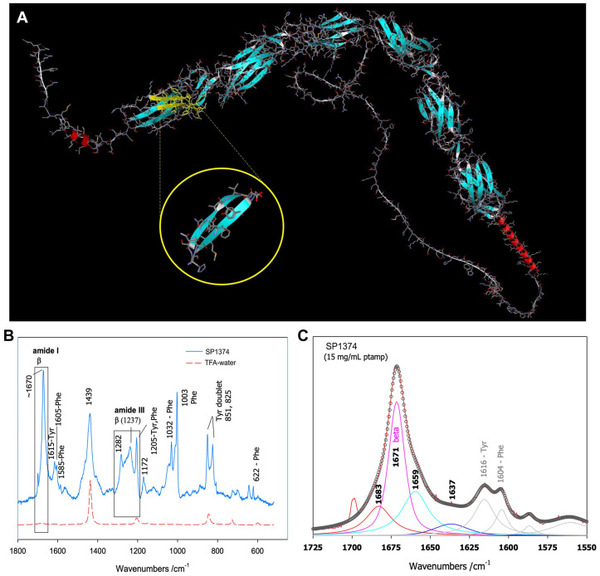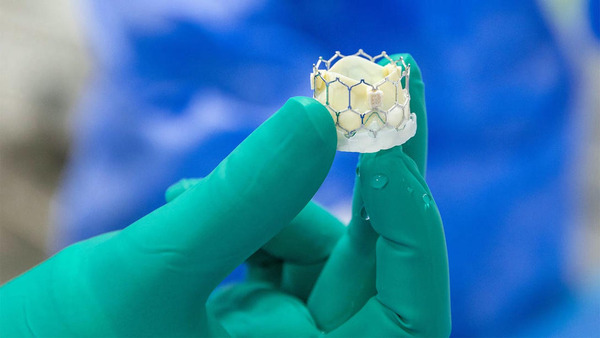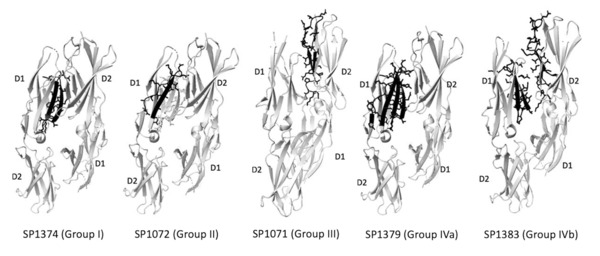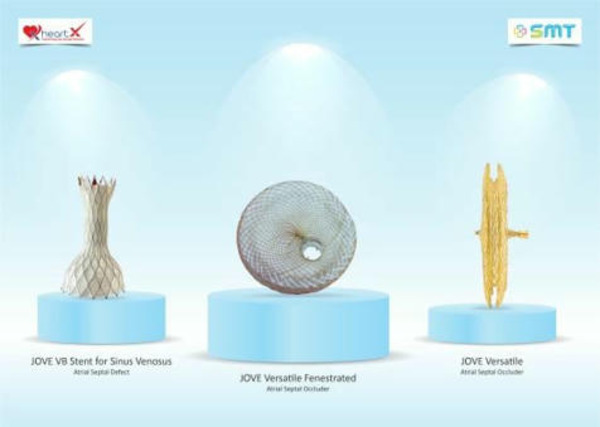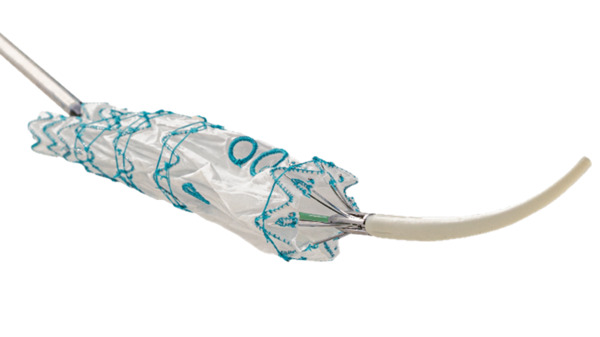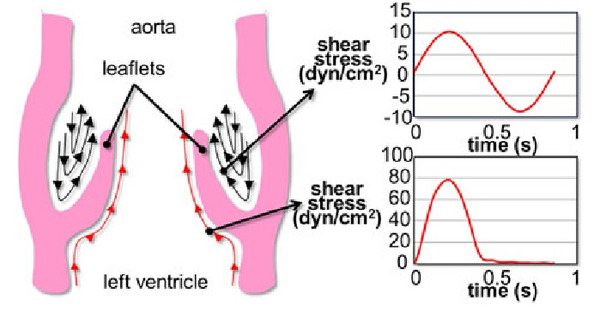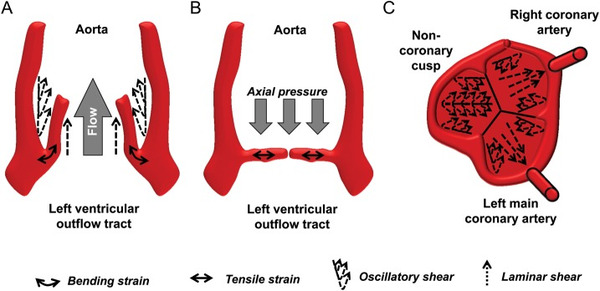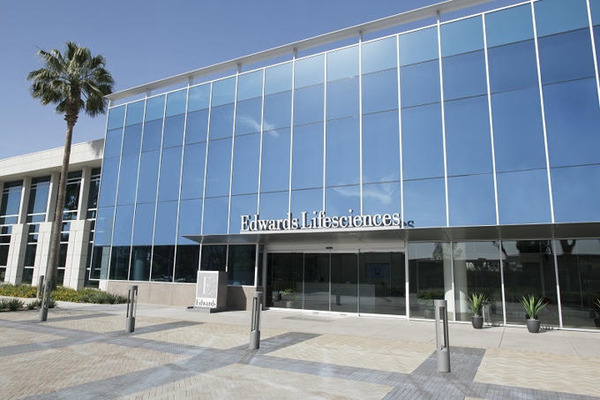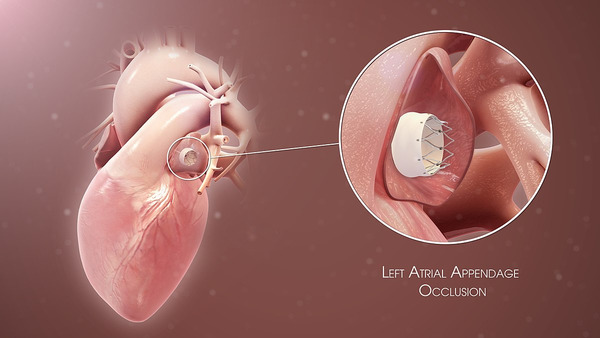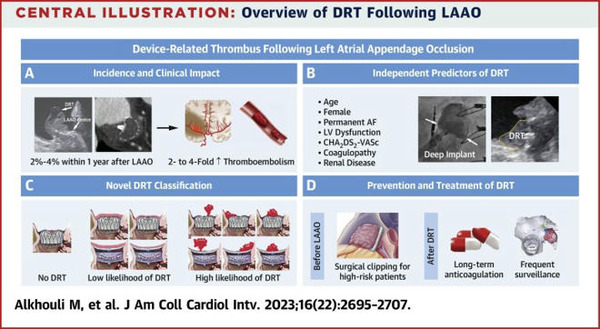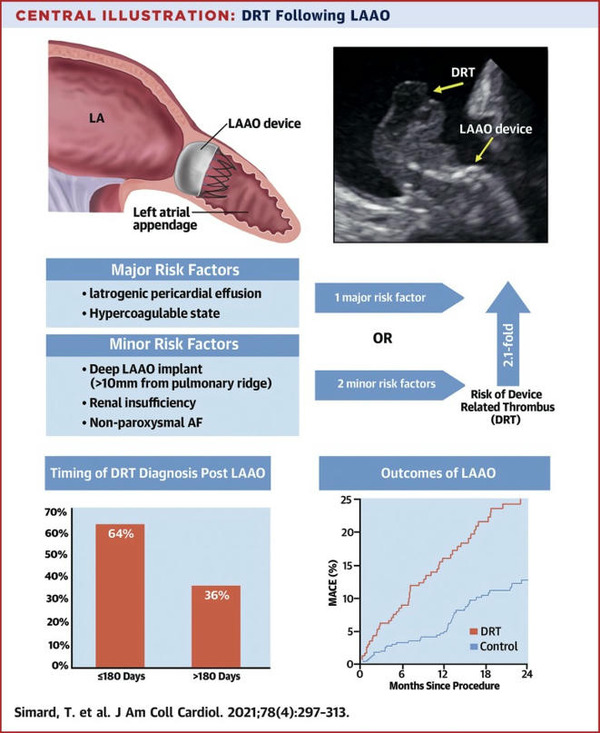 Your new post is loading...

|
Scooped by
Beeyond
February 13, 4:16 AM
|
Researchers at Harvard University have developed a technique that can make a biomaterial heart valve in minutes. The method is called “Focused Rotary Jet Spinning,” and the researchers describe it as “a marshmallow machine with a hairdryer at the back.” Basically, this technique uses air spray to direct the polymer fibers to a heart valve-shaped frame. This forms a porous scaffold that allows heart cells to enter and grow. These formed structures also have mechanical properties that serve as unidirectional valves within the heart. These scaffolds contain nanoscale signals that stimulate cell entry and proliferation, with the ultimate goal of gradually replacing biological material scaffolds by cells to achieve heart valve regeneration.

|
Scooped by
Beeyond
December 7, 2024 1:22 AM
|
The Valysnc system comprises two highly compliant balloons, made of a flexible deformable material that can expand to fit the surrounding valve anatomy. The system is designed to be delivered transeptally, with an atrial balloon expanded and lowered onto supra-annular plane of the mitral valve. Afterwards a second balloon is secured in the ventricle, held in place by a series of barbs or arms.

|
Scooped by
Beeyond
December 7, 2024 1:19 AM
|
Valvosoft is designed to non-invasively restore leaflet mobility in a stenotic aortic valve and widen the valve opening to relieve patient heart failure symptoms. High-intensity focused ultrasound waves micro-fracture calcification embedded in aortic valve leaflets without damaging tissue. The treatment is designed to be repeatable over time, as needed, to manage disease progression.

|
Scooped by
Beeyond
December 7, 2024 1:05 AM
|
The company has described this the largest valve size, supplied through the smallest delivery system available on the NHS, offering flexibility, accuracy, and stability in a large TAVI valve platform and is being used at King’s College Hospital in London.

|
Scooped by
Beeyond
December 7, 2024 1:03 AM
|
Whether the educational opportunity that is afforded by a live case justifies any potential safety risk to the patient continues to be a source of debate, Allen said, prompting the analysis looking at procedural safety among 115 live cases. Their researched comprised transcatheter aortic valve implantation (TAVI) and mitral and tricuspid procedures from three high-volume centres over a 14-year period. Researchers compared safety outcomes from the live cases to corresponding clinical trials and real-world daily practice.

|
Scooped by
Beeyond
November 11, 2024 5:22 AM
|
Degenerative mitral valve disease is common. Up to a quarter of patients with degenerative mitral valve disease may be asymptomatic despite having severe valve regurgitation. Current guideline indications for intervention in asymptomatic patient are centred on left ventricular dimensions and ejection fraction and may include consideration in atrial fibrillation, pulmonary hypertension and those with left atrial dilatation. However, despite intervention according to these recommendations, patients remain at risk of post-operative heart failure and mortality.

|
Scooped by
Beeyond
October 27, 2024 3:37 PM
|
Increasing adoption of non-resection valve repair in Barlow's disease has been observed in recent years. At mid-term follow-up, the clinical and echocardiographic results of MV repair for Barlow's disease were very good with low risk of mitral valve reintervention. At this time point, the results of non-resection techniques were comparable to the “gold standard” resection techniques. Monitoring of the long-term performance of non-resection techniques is warranted before definitive conclusion can be drawn.

|
Scooped by
Beeyond
October 14, 2024 3:39 PM
|
The trial will enroll patients with moderate-to-severe or severe mitral regurgitation (MR) who are unsuitable for surgery or transcatheter edge-to-edge repair (TEER). The trial is designed with two separate non-randomised cohorts, which include moderate/severe mitral annular calcification (MAC), and a primary cohort that will include patients with no or mild MAC.

|
Scooped by
Beeyond
October 7, 2024 5:11 AM
|
In the RESHAPE-HF2 trial (NCT02444338) on which Butler is an investigator, adding mitral transcatheter edge-to-edge repair (M-TEER) to medical therapy for moderate to severe functional mitral regurgitation led to a lower rate of initial or recurrent hospitalizations for heart failure or cardiovascular death and a lower rate of total hospitalizations for heart failure at 24 months.1 Patients also showed better health status at 12 months following transcatheter mitral-valve repair compared with those receiving medical therapy alone.

|
Scooped by
Beeyond
September 30, 2024 11:14 AM
|
Elevated RDW has emerged in cardiac surgery as a potential means of preoperative risk stratification with the capacity to predict short- and long-term postoperative mortality, acute kidney injury, and postoperative atrial fibrillation. The question as to whether perioperative hemodynamic instability may be predicted by such a marker remains a topic of ongoing debate. The aim of this study was to explore the relationship between preoperative RDW and prolonged postoperative catecholamine use in minimally invasive mitral valve surgery.

|
Scooped by
Beeyond
September 16, 2024 7:13 AM
|
Opinions about the relative value of interventions to control mitral regurgitation secondary to heart failure might be altered by two large randomized trials. The RESHAPE-HF2 trial showed that mitral transcatheter edge-to-edge repair (M-TEER) has an advantage over guideline-recommended medical therapy alone, and the MATTERHORN trial showed M-TEER to be noninferior to surgery.

|
Scooped by
Beeyond
September 9, 2024 6:35 AM
|
There was no difference in efficacy between transcatheter edge-to-edge repair (TEER) and surgery in patients with secondary mitral regurgitation (MR), according to late-breaking research presented in a Hot Line session today at ESC Congress 2024. The findings are published in the New England Journal of Medicine.

|
Scooped by
Beeyond
September 9, 2024 6:34 AM
|
From new clinical guidelines to late-breaking trial results, the 2024 European Society of Cardiology (ESC) Congress in London brought together thousands of clinicians, researchers, and health care professionals to discuss the latest advances in cardiovascular medicine. The American Journal of Managed Care® spoke with lead investigators, presenters, and the chair of this year’s Congress, John McMurray, MD, in London, where they shared the meeting highlights and recapped important data.

|
Scooped by
Beeyond
August 26, 2024 6:31 AM
|
AFMR is mainly attributed to altered structural and functional mechanics of the left atrium and the mitral valve apparatus, in the presence of AF or HFpEF. Novel imaging techniques, such as left atrial strain and late-enhancement CMR, have been shown to be associated with early disease detection and prognosis. Multimodality imaging will aid in the proper establishment of diagnostic criteria in future trials, as well as in individualized decision making in clinical practice. Finally, despite the promising results, there is a large need for randomized trials to compare the safety and efficacy of surgery vs. TEER in the setting of severe disease.

|
Scooped by
Beeyond
August 23, 2024 7:05 AM
|
Using peptides replicating the membrane-distal portion of CD31, which is prominently exposed on the inner side of healthy vessels, can simulate the surface of a healthy endothelium. This approach effectively prevents the deposition and activation of blood platelets and leukocytes, which are abnormally prolonged by the presence of a foreign body at sites of endovascular stent implantation, and promotes the acquisition of physiological phenotype by the ECs covering the surface.

|
Scooped by
Beeyond
August 19, 2024 5:04 AM
|
With protamine routinely given at the end of transcatheter aortic valve replacement or implantation (TAVR or TAVI), patients achieved hemostasis quicker and with greater success, according to the ACE-PROTAVI trial.

|
Scooped by
Beeyond
August 5, 2024 7:11 AM
|
CD31-coated surfaces promoted the acquisition of a physiologic endothelial cell phenotype and rapid coverage at a significantly higher extent as compared to bare metallic surfaces in vitro. Nitinol and cobalt-chromium stents coated with CD31-mimetic peptides were rapidly integrated within the arterial wall in vivo without thrombo-inflammatory signs up to 30 days after implantation.

|
Scooped by
Beeyond
August 1, 2024 5:33 PM
|
Through this collaboration, SMT gains an innovative product line in the Congenital Heart Defect space. This collaboration not only broadens SMT's advanced product offerings within the Congenital Heart Defect space but also marks a significant stride toward revolutionizing healthcare on a global scale.
HeartX's portfolio includes advanced products like the JOVE VB Stent for Sinus Venous ASD, JOVE Versatile ASD (VASO), Fenestrated VASO and JOVE PFO, with ongoing developments in PDA and VSD closures as well as advanced visualization systems for structural interventions.

|
Scooped by
Beeyond
August 1, 2024 5:32 PM
|
The next-generation Fenestrated Treo endograft has reliable staged expansion for a controlled deployment, with a trusted 19Fr, low-profile delivery system to treat short-neck and juxtarenal/pararenal abdominal aortic aneurysms. Fenestrated Treo offers the physician numerous key features, including the ability to reposition the graft while partially deployed; circumferential suture wraps; modified distal clasping to improve torque control; the ability to cannulate from above and below, enabling faster and safer access for dealing with narrow anatomies; and, notably, an optimal delivery time of less than five weeks.

|
Scooped by
Beeyond
August 1, 2024 6:51 AM
|
Hemodynamic stresses are presumed to play an important role in the development of calcific aortic valve disease (CAVD). The elucidation of the shear stress mechanisms involved in the pathogenesis of CAVD has been hampered by the complexity of the native unsteady and side-specific valvular flow environment.

|
Scooped by
Beeyond
August 1, 2024 6:46 AM
|
The stress and strain exerted on the aorta and the aortic valve induce changes directly sensed by the structural cells, and also alter the ECM, both contributing to structural alterations. Associated pathologies, such as aortic aneurysms and aortic stenosis, may result from either an enhanced intrinsic propensity of the arterial wall to dilate in response to normal biomechanics (Marfan, bicuspid valve), or as a result of pathologic biomechanical load in a given arterial segment. Several disease-specific pathophysiological processes directly depend on biomechanical factors, such as macromolecule transport, gene expression alterations, cell death pathways, calcification, inflammation, and neoangiogenesis.

|
Scooped by
Beeyond
July 19, 2024 3:58 PM
|
The acquisition enhances the company’s TMVR technologies to address large unmet structural heart patient needs and support sustainable long-term growth, the press release goes on to state. Innovalve will join the transcatheter mitral and tricuspid therapies (TMTT) product group, led by corporate vice president, Daveen Chopra.

|
Scooped by
Beeyond
July 4, 2024 1:44 AM
|
Oral anticoagulation therapy (OAC) is a mainstay for mitigating stroke and other embolic events in patients with atrial fibrillation (AF). Despite the demonstrated efficacy of OAC in reducing events, many patients are unable to tolerate OAC due to bleeding risks. Left atrial appendage occlusion (LAAO) devices were developed as implantable technologies to moderate stroke risk in patients with intolerance to OAC. Despite clinical data supporting near-comparable protection against thromboembolic events with OAC, device-related thrombus formation has emerged as a critical complication following LAAO that remains a potential limitation to the safety and efficacy of LAAO. Improved biocompatibility of LAAO devices with fluoropolymers, a well-established stent-coating technology used to reduce thrombus formation and promote endothelialization, may optimize outcomes after LAAO.

|
Scooped by
Beeyond
July 4, 2024 1:43 AM
|
Device-related thrombus after left atrial appendage occlusion is rare but is associated with adverse clinical outcomes and is challenging to manage. Independent predictors of DRT include nonmodifiable clinical characteristics (eg, permanent AF) and modifiable procedural factors (eg, deep implantation). This report proposes a novel mechanistic classification of DRT and HAT that can be used to guide future research.

|
Scooped by
Beeyond
July 4, 2024 1:42 AM
|
DRT after LAAO is associated with ischemic events. Patient- and procedure-specific factors are associated with the risk of DRT and may aid in risk stratification of patients referred for LAAO.
|

Curated by Beeyond
BEEYOND is a consulting company in the field of disruptive innovation, accompanying established companies on out-of-the-core growth strategy, from creation of new concepts to product launch. Reach us at: contact@beeyond.fr.
|

 Your new post is loading...
Your new post is loading...

